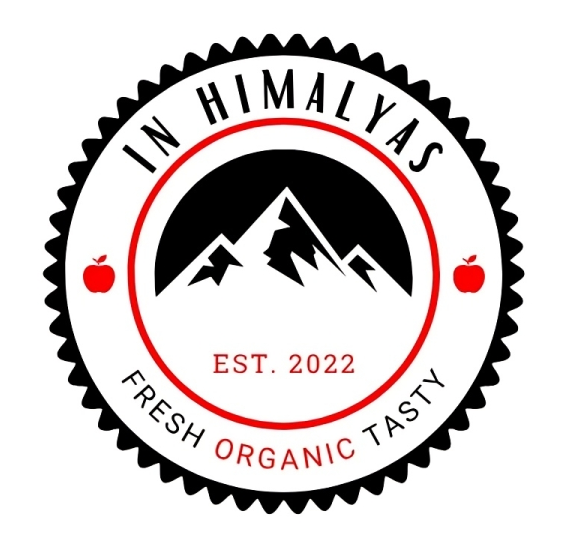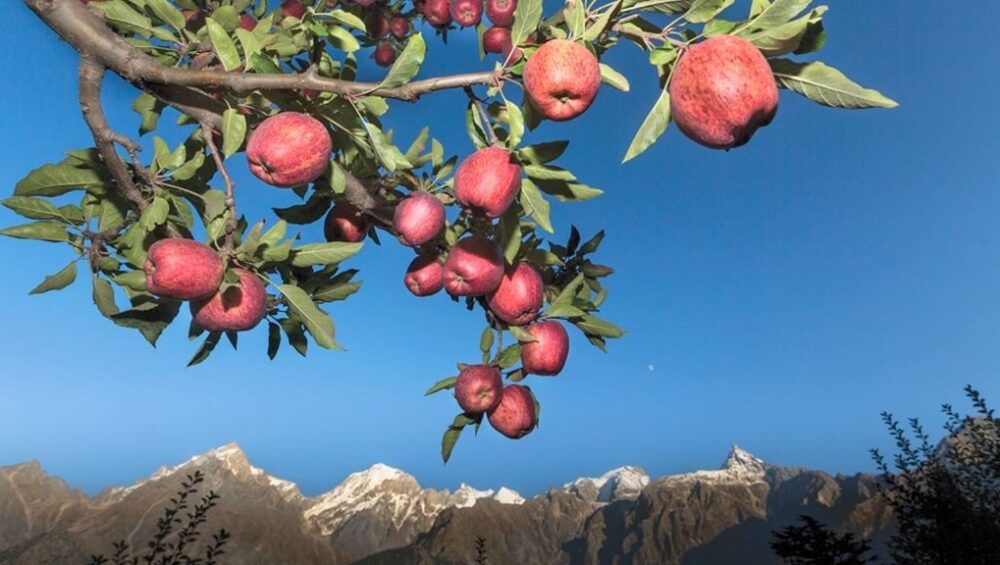There’s something magical about biting into a crisp apple from Shimla or savoring the rich juiciness of Himachal’s cherries. The sweetness feels more natural, the aroma more intense, and the texture more satisfying than anything you find in regular markets. But what makes Himalayan fruits so extraordinary?
The answer lies in a unique combination of geography, climate, and traditional farming methods — a natural formula that science fully supports.
1. The Altitude Advantage
Himachal Pradesh’s orchards thrive between 5,000 and 8,000 feet above sea level. This elevation creates cooler nights and sunny days, which slow fruit ripening.
-
Cool Nights: Slower respiration means sugars are stored longer, enhancing sweetness.
-
Sunny Days: Long sunlight hours boost photosynthesis, creating more natural fructose.
Example: Shimla’s Delicious Royal Apples grow at high altitudes where temperatures swing by 15–20°C in a day, concentrating flavor compounds.
2. Fertile Himalayan Soil
The region’s soil is rich in minerals like potassium, calcium, and magnesium due to centuries of glacial deposits.
| Key Mineral | Benefit to Fruit Quality |
|---|---|
| Potassium | Improves sweetness and flavor balance |
| Calcium | Enhances firmness and shelf life |
| Magnesium | Boosts chlorophyll production for better color |
This nutrient-dense soil is a natural fertilizer — no artificial enhancers required.
3. Pure Himalayan Water
Irrigation in Himachal’s orchards often comes from natural springs and snowmelt from the Himalayas. This pristine water:
-
Contains trace minerals that enrich fruit quality
-
Lacks industrial pollutants
-
Maintains balanced pH for optimal root absorption
The result? Fruits that taste cleaner, fresher, and more vibrant.
4. Organic & Traditional Farming Practices
Most Himachal farmers follow pesticide-minimal or fully organic methods.
-
Use of cow dung manure and compost instead of synthetic fertilizers
-
Manual weeding to protect soil health
-
Natural pest control using neem oil and ash
Organic farming not only preserves nutrients but also prevents the bitter aftertaste often found in chemically treated fruits.
5. Climate & Seasonal Perfection
Himachal’s fruiting seasons are perfectly aligned with natural growth cycles:
-
Cherries: May–June
-
Apricots: June–July
-
Apples: July–October
-
Pears & Plums: July–September
Unlike mass-market fruit that’s forced to ripen early, Himalayan fruits ripen on the tree — delivering maximum flavor and aroma.
6. The Science of Sweetness
Fruits from Himachal have higher Brix levels — a measure of natural sugar content.
-
Himachal Apples: 13–15 Brix (vs. 10–12 in regular apples)
-
Himachal Cherries: 16–20 Brix (vs. 14–15 in imported cherries)
Higher Brix = naturally sweeter taste + richer aroma.
7. Freshness – From Orchard to Your Door
When you buy from In Himalayas, fruits are shipped directly from the orchards — often within 24–48 hours of picking. This short supply chain means:
-
No long cold storage that dulls flavor
-
Nutrient retention is maximized
-
Minimal bruising due to careful packing
8. Why Buying Direct Supports Sustainability
Purchasing directly from Himachal farmers:
-
Gives them fair prices
-
Reduces food miles (lower carbon footprint)
-
Encourages eco-friendly farming for future generations
Conclusion – Taste the Difference Yourself
The unbeatable taste of Himachal fruits isn’t a coincidence — it’s the result of nature’s best conditions and farmer dedication. From the altitude advantage to pure water and organic methods, every factor contributes to the sweetness you can taste.
If you haven’t yet experienced Delicious Royal Apples, Kinnaur Golden Apples, or Shimla Cherries, now is the time.

FAQs – Himachal Fruits
1. Are Himachal fruits really sweeter than others?
Yes. Due to high-altitude growth, they have higher natural sugar content (Brix), making them sweeter and more flavorful.
2. Are your fruits organic?
We source from farmers using organic and pesticide-minimal practices.
3. How long do Himachal fruits stay fresh?
Stored in a cool place, they last 2–3 weeks; refrigeration can extend shelf life.
4. What’s special about Himalayan water for farming?
It’s naturally mineral-rich, pollutant-free, and perfectly balanced for plant growth.
5. Can I order Himachal cherries outside cherry season?
Fresh cherries are seasonal (May–June), but we offer dried cherries year-round.
6. How soon after harvest are fruits shipped?
Usually within 24–48 hours for maximum freshness.



